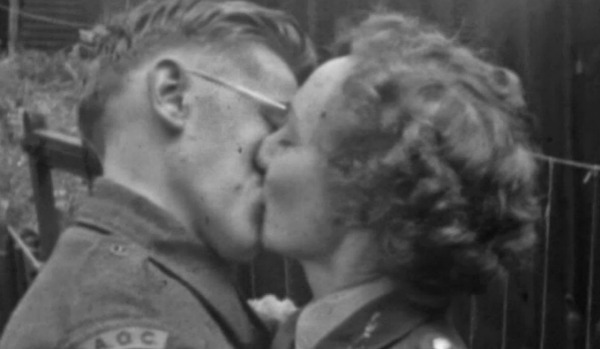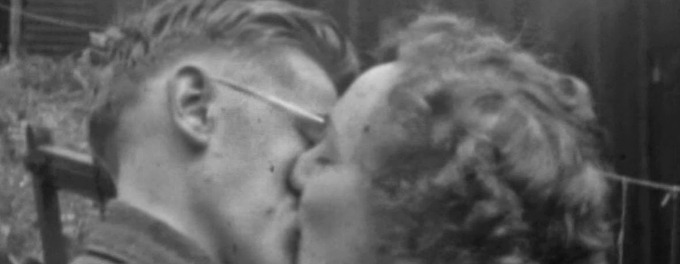There is a machinic quality to the collection of short footage in SEVEN STREETS, TWO MARKETS AND A WEDDING. The frequency and urgency with which these various directors point cameras at their London streets seems to boom as the clips continue. As the number of cars on the black-and-white roads increases – a solitary steamroller soon giving way to hazardous highways – so does the number of lenses hungry to record and document. The stains and flickers on the old footage betray the mechanics of the camera, the cogs and conveyor belts of the image mirroring the growing industry of the world within it. Whilst the reel grows in ambition and scale, it also grows in curiosity, the lens gradually moving away from the stoic axel of the tripod and into the human hand, flying in through shop windows, into people’s faces and daily routines. The camera grows increasingly more human as man grows inseparable from his mechanical supports. This is the triumph of the film: its tangible love of evolution and its poignant documentation of the growing alliance between man and machine.
Central to this cinematic machine is the plurality of different directors, cameras, colours and grains. Certain extracts comprise professional, consciously directed footage whilst others seem anonymous and intimate. A particularly amusing clip arrives from a broadcast by Wembley Road Safety Council in 1949, detailing the action that should be taken in the event of a road traffic accident. This concludes with the morbid question “how will you be lying in a year?”, juxtaposing glamorous images of bikini-clad women enjoying the sun with the shot of a coffin amid overgrown weeds. Another memorable clip, in contrast, comes from an unknown source and documents a wedding in 1944. In place of professional titles, narration and controlled tracking shots, the image delights in the shakiness and promiscuity of its director’s wrist. The focus often drops playfully from the faces of the wedding guests to their knees or shoes, unwittingly exposing things that might otherwise have been missed: the face of the man squashed on the sofa underneath his wife, the women fidgeting with their skirts, the man looking past the lens, telling a joke to whoever is holding the camera.
Where no sound accompanies the original footage, added music is experimental and haunting. The clip entitled “All On A Winter’s Day” (shot in 1952) is rendered ethereal by a ghostly accompaniment of playful, metallic chimes and breathy synth. These chimes – persistent, tinny, electronic – seem part of the restless, filmic industry, exposing again the stannic sheen of the machinery with which human memory and experience is seen to become increasingly fused. Also very present, however, is the humour which becomes caught up in this charging evolution. Shots of young women working out at a local gym in their tights – repetitive movements exaggerated with the accelerated jolt of the reel – add hilariously self-conscious, human faces to the riotous rhythm of the city.
“This is an increasingly hybrid, polyglot London in which brick, machine and human become ever more entangled…”
Over the course of 90 minutes, the spectator of SEVEN STREETS, TWO MARKETS AND A WEDDING quite literally witnesses the building of London. This is an increasingly hybrid, polyglot London in which brick, machine and human become ever more entangled. This entanglement, however, becomes a sturdy and supported site of both current activity and embodied memory. The building blocks of a city are laid out before us as if in LEGO; people inhabit the markets and parks in their various costumes and caricatures whilst the lens admires new builds, new vehicles, new trends. The compilation of clips establishes the camera as a building block in itself, central and active in the construction of a human metropolis. Most arresting, however, are moments in which we see snags in the image, cracks in the brickwork, when the rhythm of the machine is momentarily halted. It is at these moments that the camera and the city alike act almost in spite of themselves. The final image is of a boy in a parade who spies the camera and reaches out with his hand to cover over the lens. The camera here, thwarted, is at its most human, the network of optics and wiring momentarily replaced by fleshy lifelines.
SEVEN STREETS, TWO MARKETS AND A WEDDING screens on 3rd September at 6.15pm, at the Cambridge Film Festival.
httpvh://youtu.be/ZZX30K-Il1k


